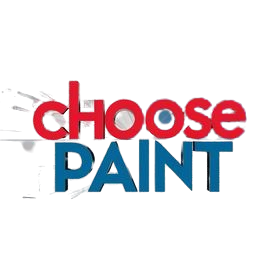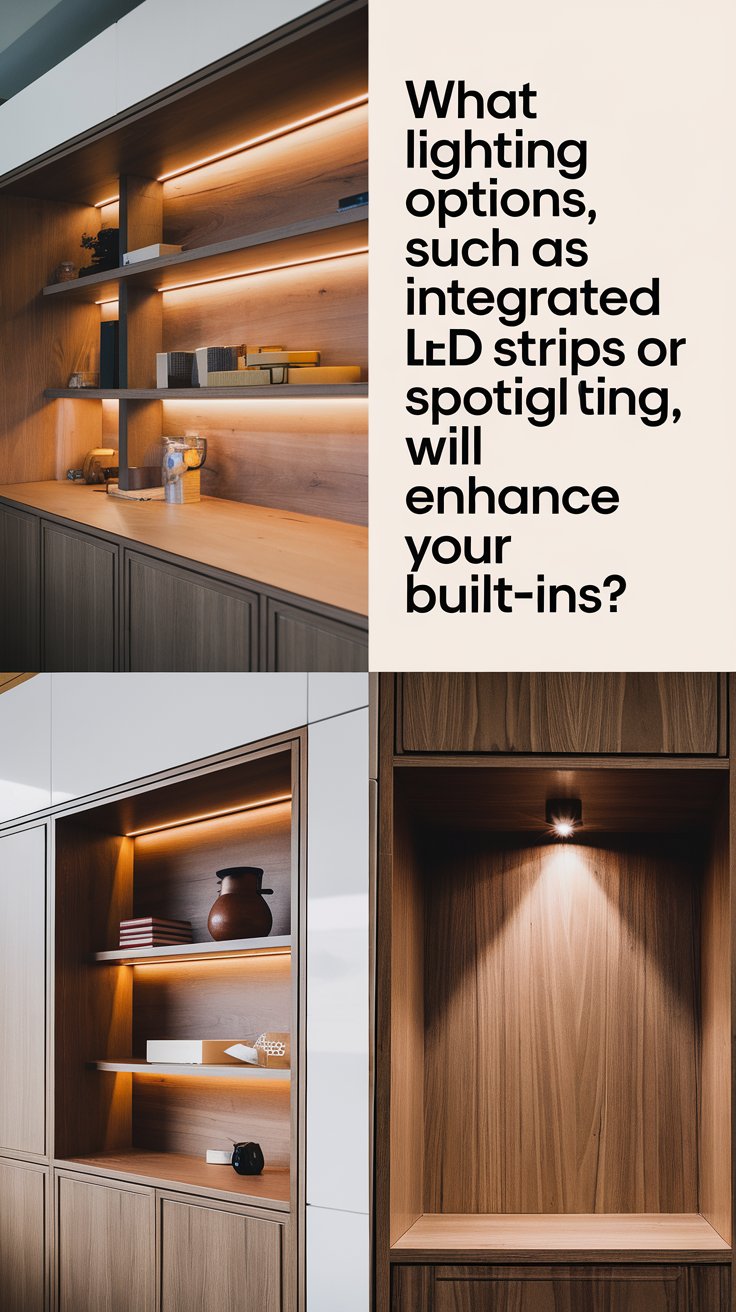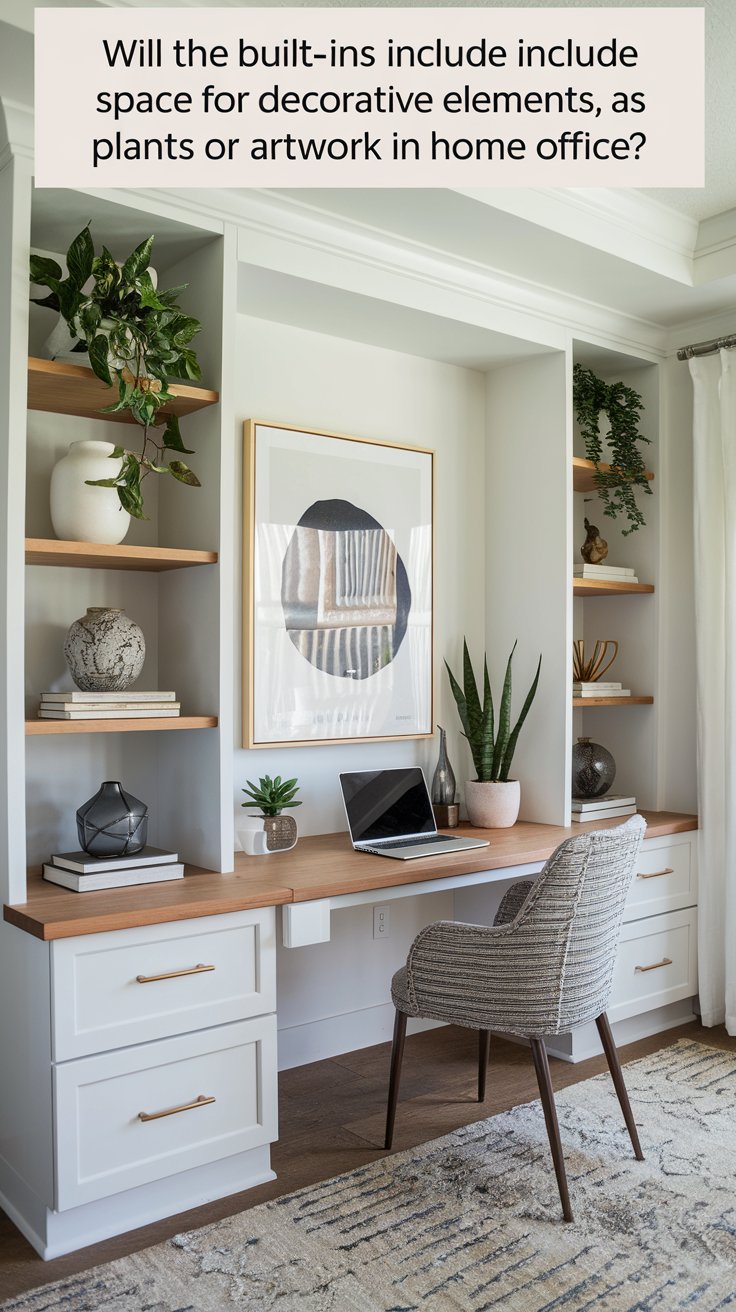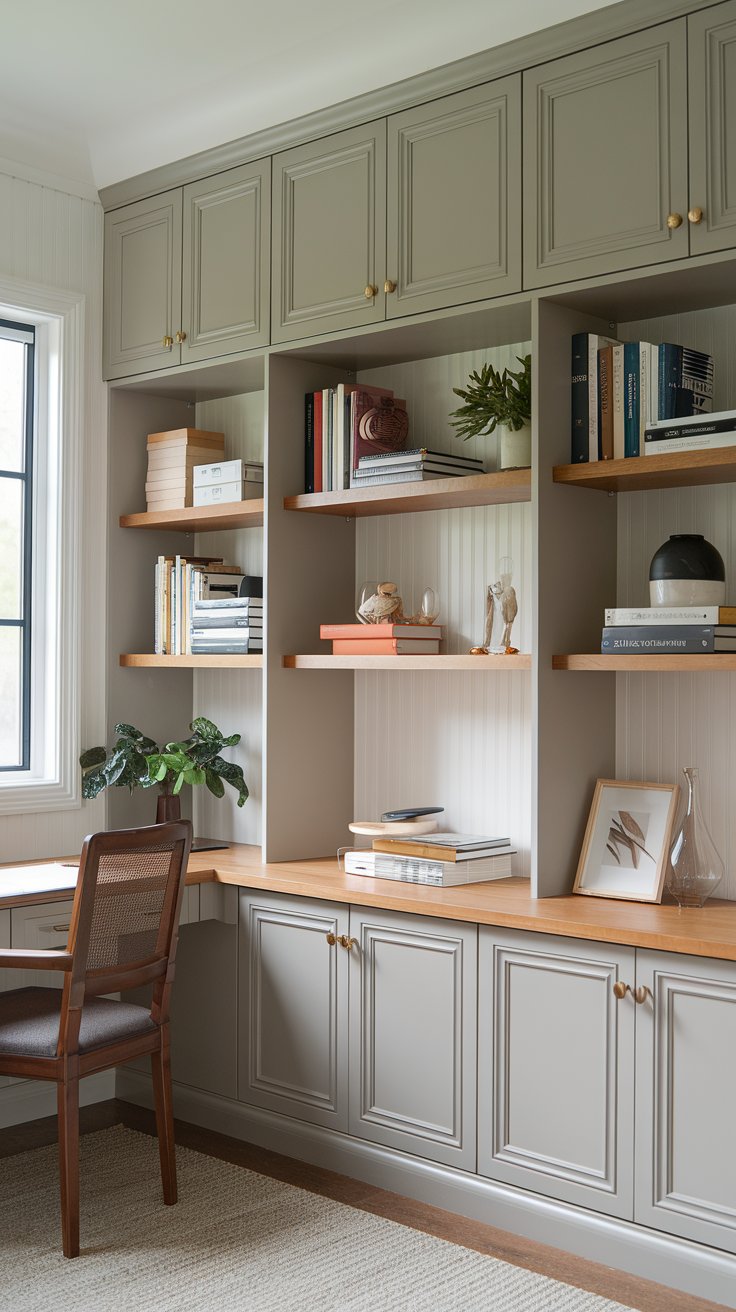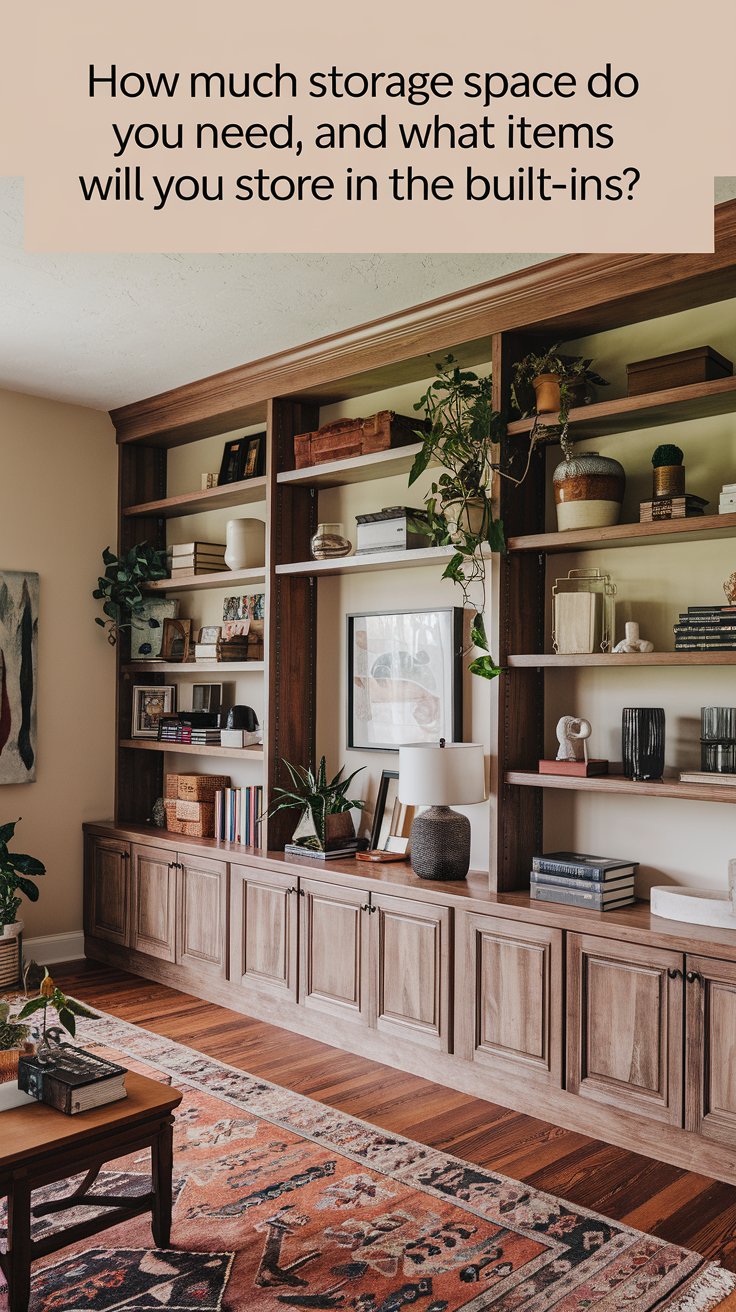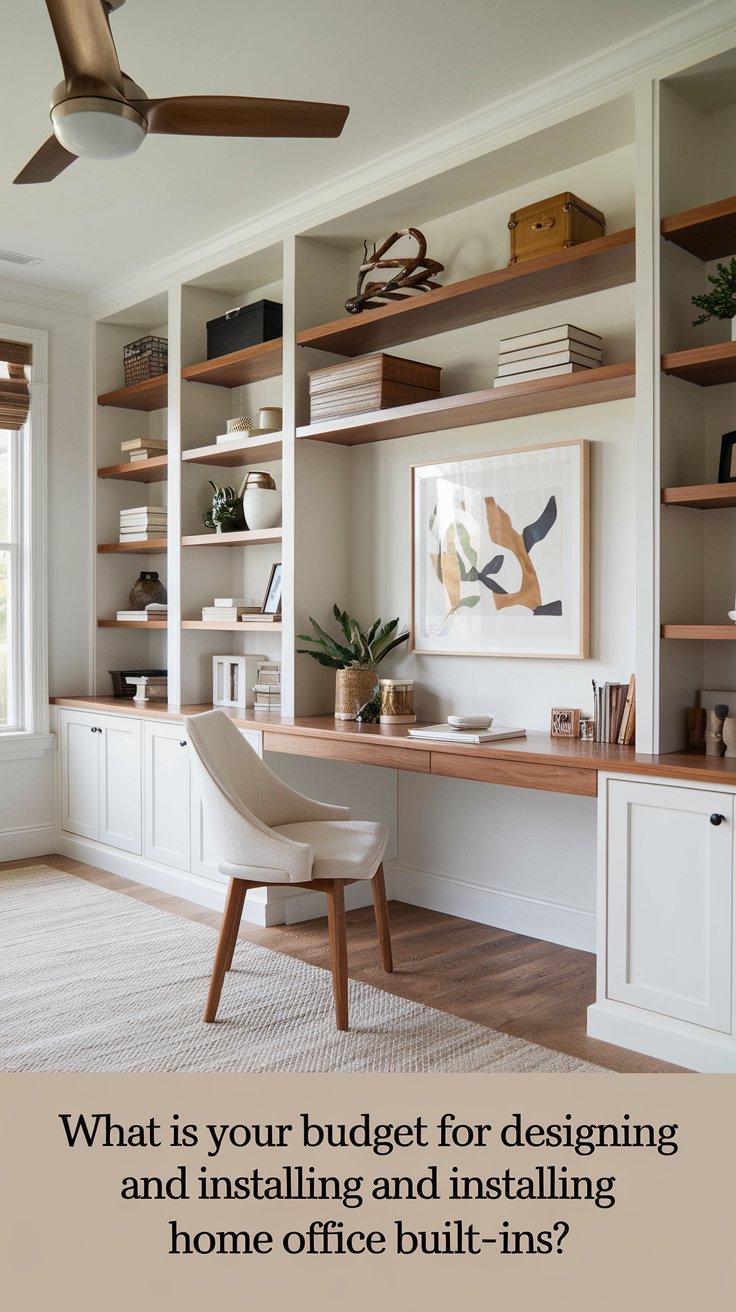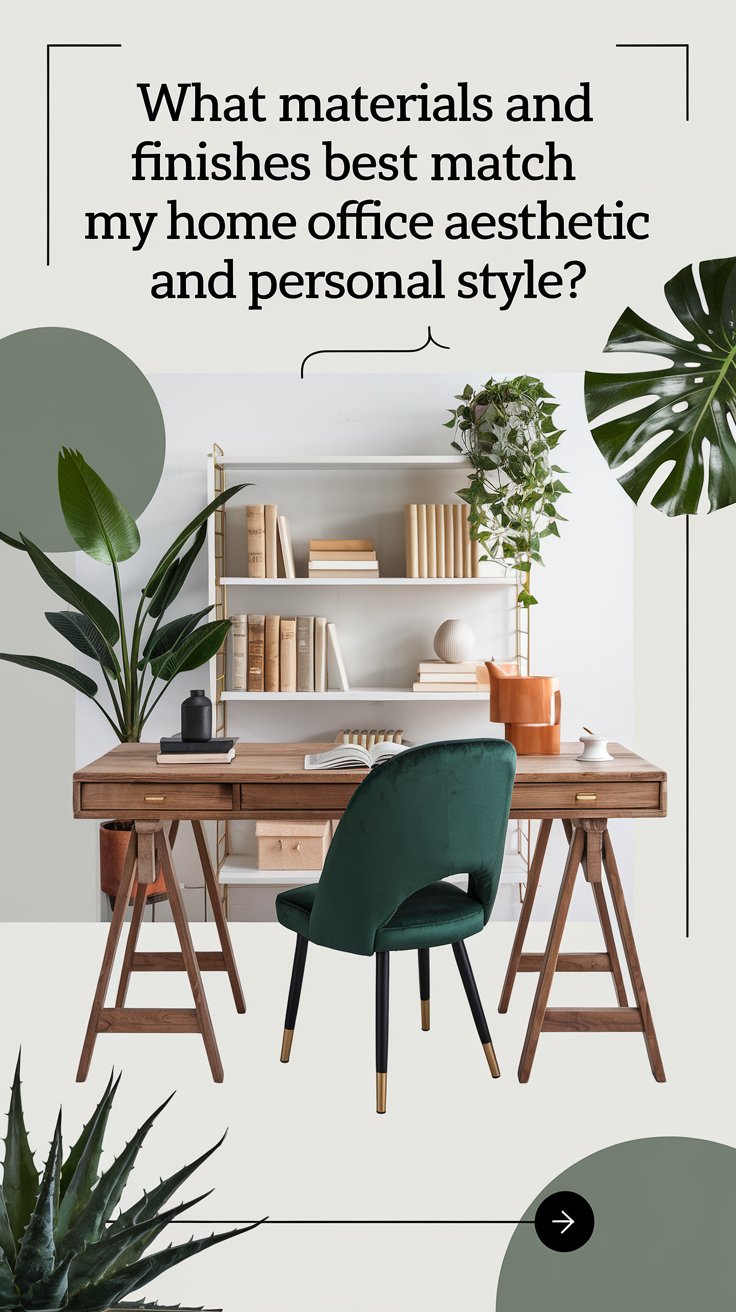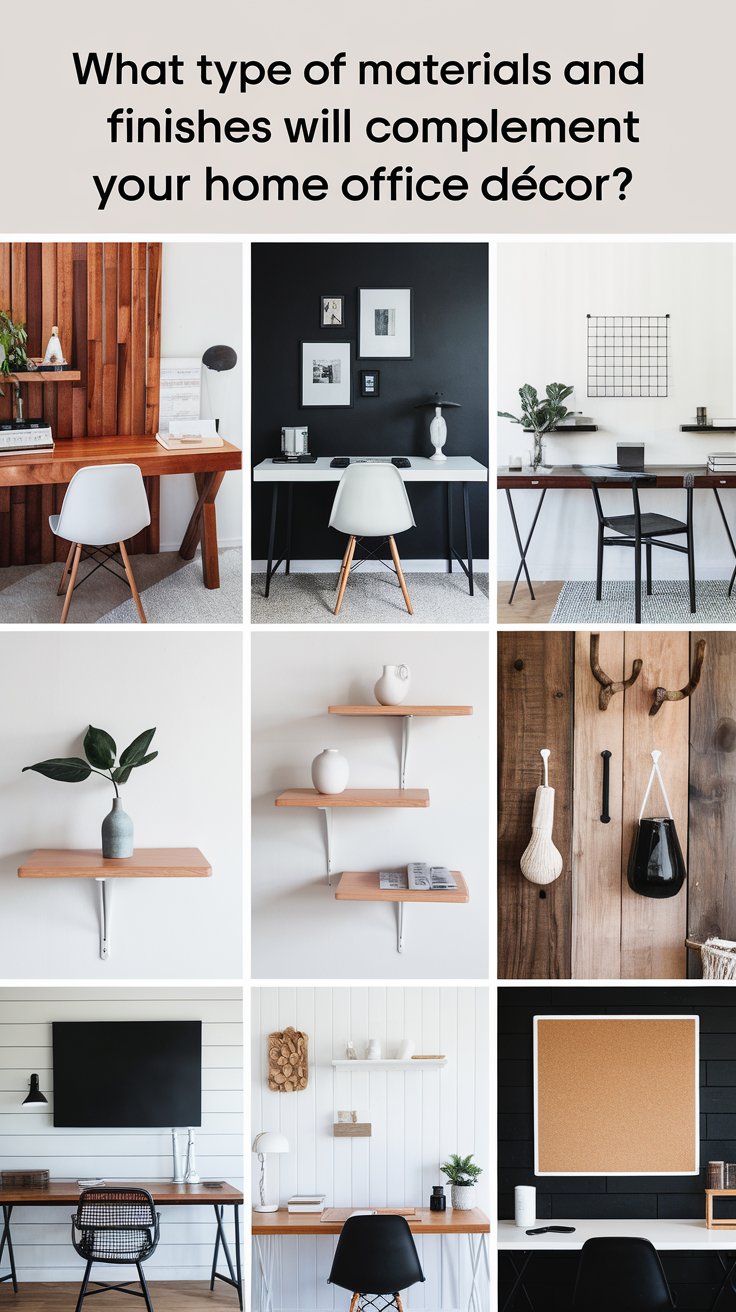Built-ins are the crown jewel of interior design—a harmonious blend of function and style. Whether they’re bookshelves, cabinets, or entertainment centers, lighting can elevate built-ins from ordinary to extraordinary. Integrated LED strips, spotlights, and other lighting solutions can transform these architectural features into stunning focal points. Here’s an in-depth guide to lighting options that will make your built-ins truly shine.
Integrated LED Strips: A Modern Touch :

Integrated LED strips are among the most versatile lighting solutions for built-ins. Their sleek design and energy efficiency make them ideal for enhancing the aesthetics and functionality of any built-in unit.
Advantages of Integrated LED Strips:
- Customizable Lighting: LED strips come in various lengths and can be cut to fit precisely within shelving units or cabinet interiors.
- Dimmable Options: Many LED strips offer dimmable settings, allowing you to adjust brightness according to the ambiance you want to create.
- Color Choices: From warm white to vibrant RGB options, LED strips can suit any mood or design scheme.
- Low Heat Emission: LEDs emit minimal heat, ensuring safe installation even in enclosed spaces.
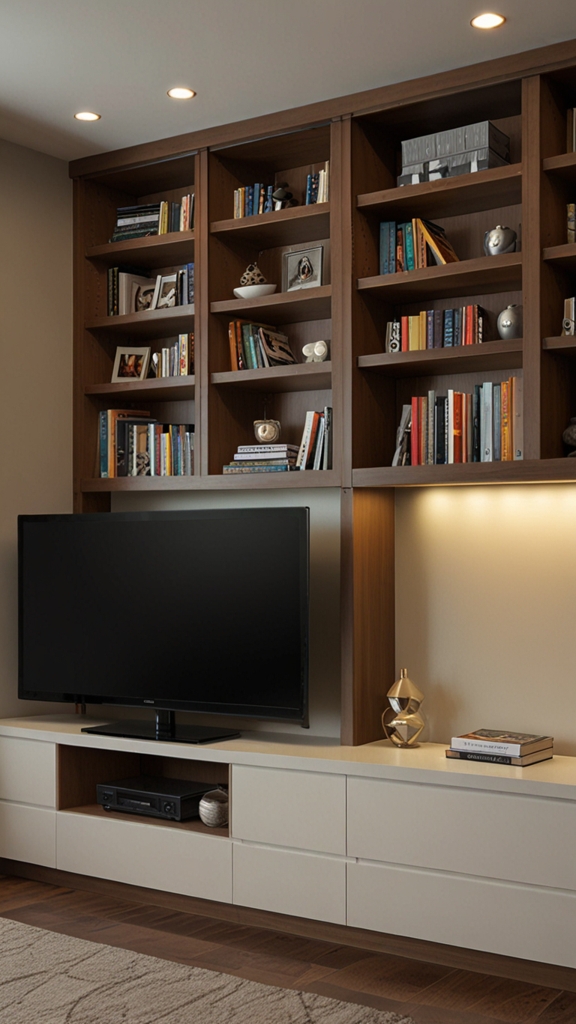
Applications for Built-Ins:
- Shelving Units: Install LED strips along the back edge to create a soft, even glow that highlights books, decor, or collectibles.
- Cabinets: Inside cabinets, LED strips provide functional illumination for finding items easily.
- Entertainment Centers: Use strips around TV units for a modern, halo-lighting effect that reduces screen glare.
Pro Tip: Opt for adhesive-backed LED strips for easy installation and ensure they’re positioned to hide the actual strip, showing only the light.
Spotlighting for Dramatic Effect :

Spotlighting adds a touch of drama and sophistication to built-ins. With their focused beams, spotlights are perfect for highlighting specific elements within your unit.
Advantages of Spotlights:
- Directional Focus: Spotlights can be angled to draw attention to artwork, sculptures, or decorative accents.
- Variety of Styles: Choose from recessed, track-mounted, or surface-mounted spotlights to suit your design preferences.
- Layering Capability: Spotlights work well in combination with other lighting types, adding depth to your built-ins.
Applications for Built-Ins:
- Art Displays: Highlight a framed photo or a statement piece on your shelves.
- Accent Pieces: Use spotlights to illuminate vases, trophies, or other collectibles.
- Workspace Integration: Add focused lighting to built-ins in home offices for a professional look.
Pro Tip: Use adjustable spotlights for flexibility in directing the light exactly where you want it.
Puck Lights: Small But Mighty :
Puck lights are compact, circular lights that pack a punch when it comes to illuminating built-ins. They’re easy to install and provide targeted lighting without taking up too much space.
Advantages of Puck Lights:
- Compact Design: Their small size makes them ideal for tight spaces.
- Battery-Powered Options: No need for wiring; battery-powered puck lights are great for DIY installations.
- Bright Illumination: Despite their size, puck lights deliver powerful, focused lighting.
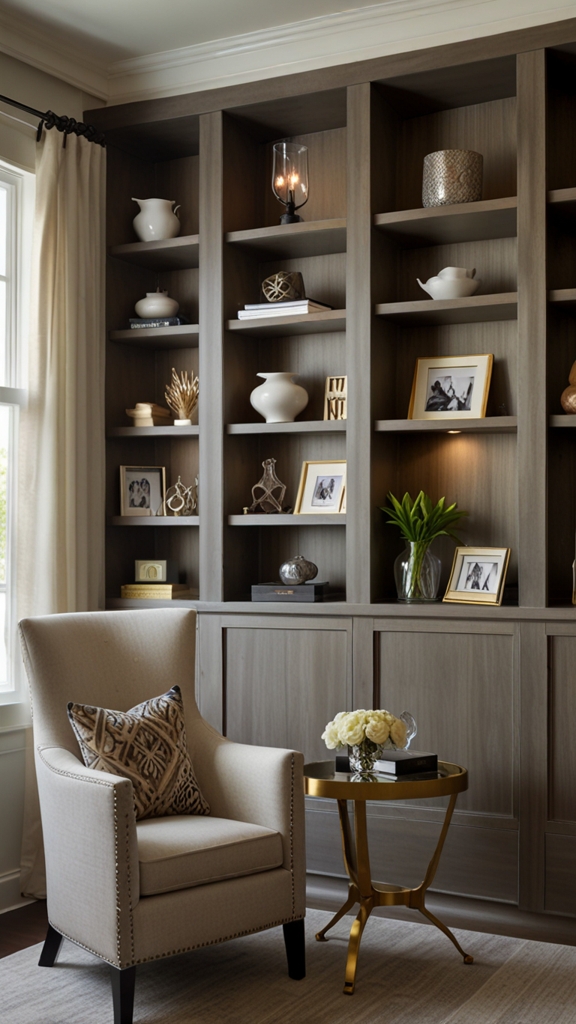
Applications for Built-Ins:
- Under-Shelf Lighting: Install puck lights under shelves for task lighting or to highlight decor.
- Cabinet Interiors: Brighten up dark corners within cabinets.
- Bookshelves: Use puck lights to spotlight specific books or decorative items.
Pro Tip: Position puck lights symmetrically for a balanced and polished look.
Backlighting: Subtle and Sophisticated :

Backlighting is a subtle yet striking way to enhance built-ins. It creates a halo effect that adds depth and dimension to your design.
Advantages of Backlighting:
- Subtle Illumination: Provides a soft glow that’s easy on the eyes.
- Mood Enhancement: Perfect for creating a cozy, inviting atmosphere.
- Energy Efficiency: LED backlighting is low-energy, making it an eco-friendly choice.
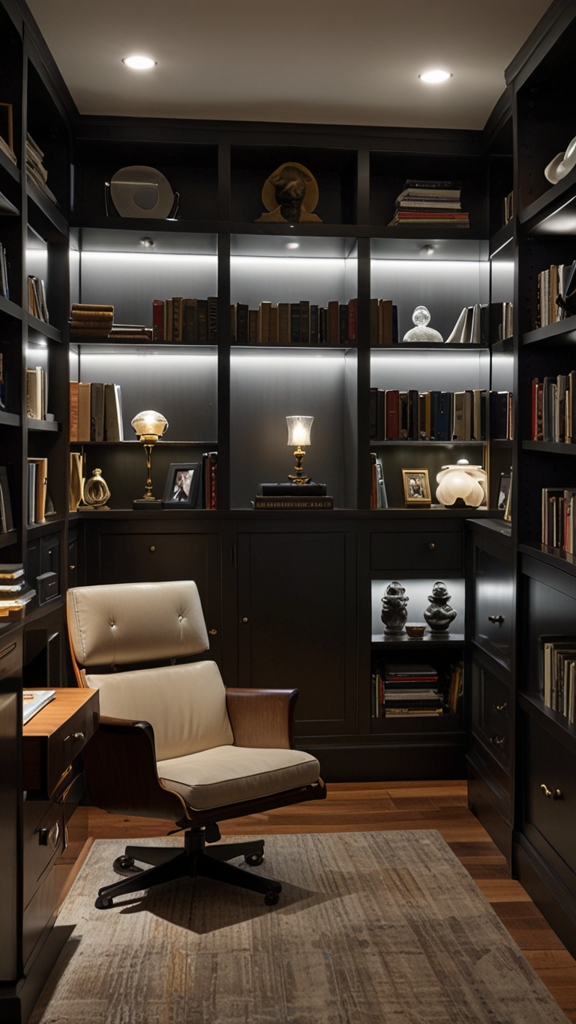
Applications for Built-Ins:
- Floating Shelves: Install backlighting to give the illusion of floating shelves.
- TV Units: Backlight around TVs to reduce eye strain and enhance the viewing experience.
- Glass Cabinets: Pair with glass shelves for a luminous, high-end look.
Pro Tip: Use diffusers to ensure even light distribution and avoid harsh lines.
Undercabinet Lighting: Functional and Stylish :
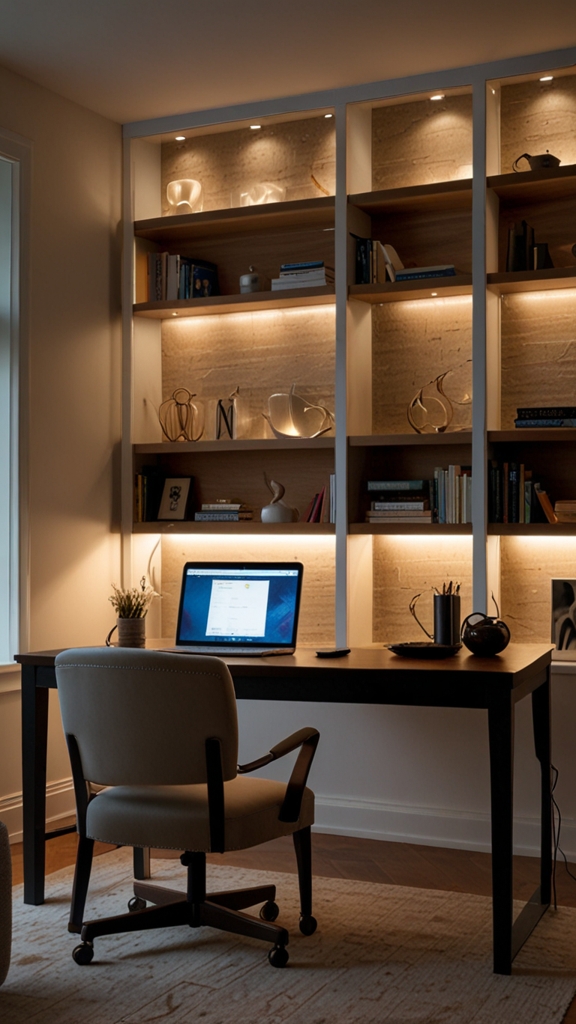
Undercabinet lighting is not just for kitchens. When applied to built-ins, it adds both style and practicality.
Advantages of Undercabinet Lighting:
- Task Lighting: Perfect for workspaces or areas where additional lighting is needed.
- Concealed Design: Hidden under shelves or cabinets, it provides illumination without visible fixtures.
- Versatile Options: Available in LED strips, bars, or puck lights.
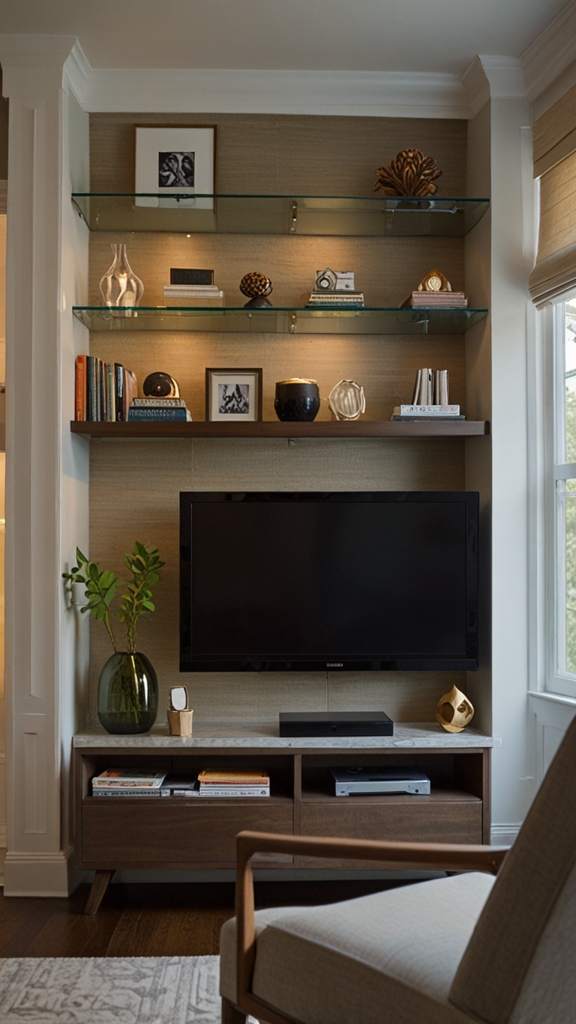
Applications for Built-Ins:
- Home Offices: Illuminate your desk area for better productivity.
- Media Centers: Highlight the lower sections of entertainment units for a balanced glow.
- Storage Units: Make it easier to locate items in deep shelves or cabinets.
Pro Tip: Choose motion-activated undercabinet lights for added convenience.
Combining Lighting Types: Layering for Impact :
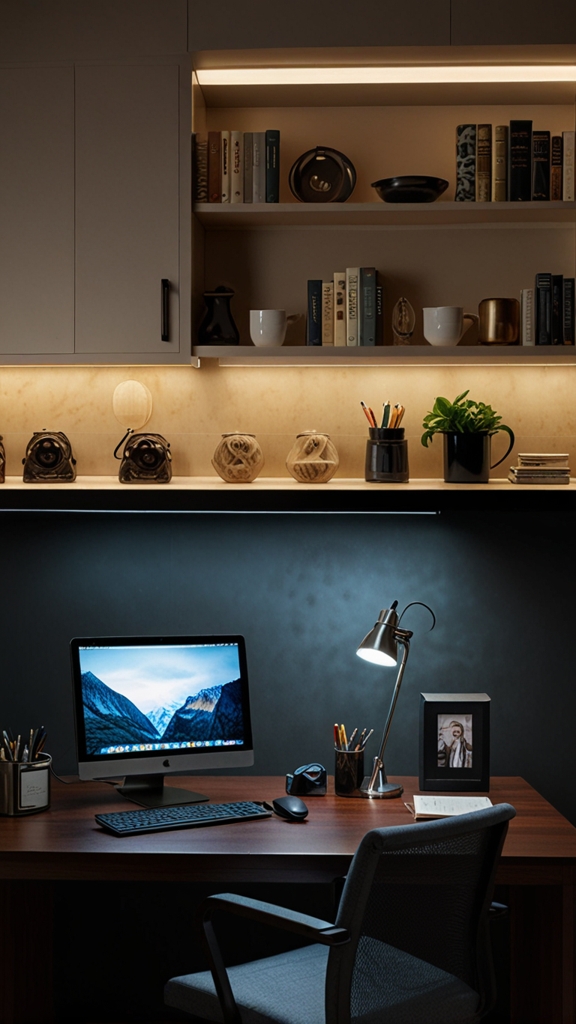
For the ultimate effect, combine multiple lighting types within your built-ins. Layering creates a dynamic, multidimensional look that enhances both form and function.
How to Layer Lighting:
- Primary Lighting: Use integrated LED strips for overall illumination.
- Accent Lighting: Add spotlights or puck lights to highlight specific features.
- Ambient Lighting: Incorporate backlighting for a warm, cozy glow.
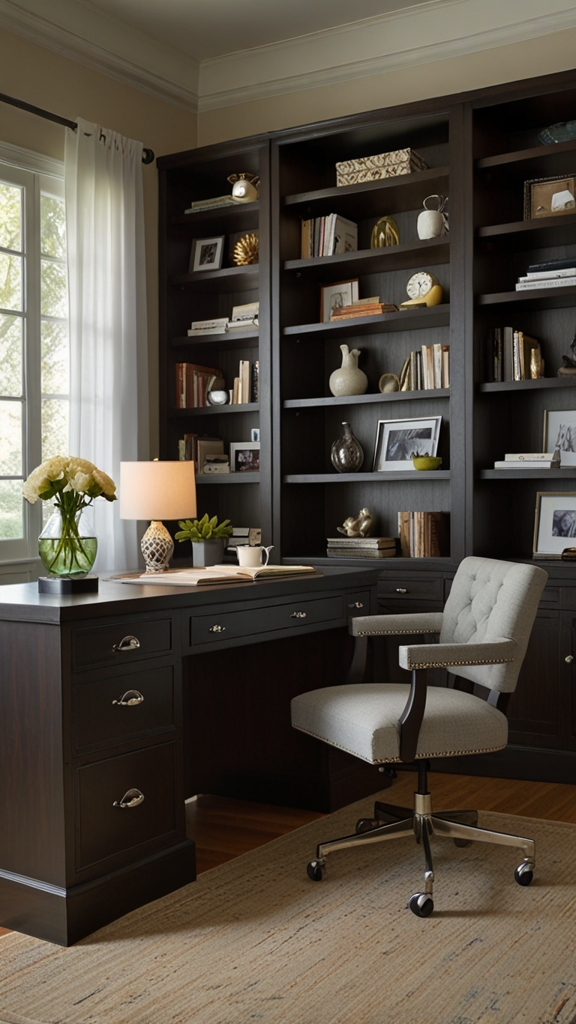
Example Applications:
- Living Room Shelves: Combine LED strips along the edges, puck lights for individual decor pieces, and backlighting for an overall glow.
- Home Office Built-Ins: Pair undercabinet lighting for task illumination with spotlights for decorative accents.
- Media Centers: Use LED strips around the frame, spotlights for collectibles, and backlighting for a cinematic effect.
Pro Tip: Use a smart lighting system to control all the layers seamlessly.
Final Considerations :

1. Choose the Right Color Temperature:
- Warm White (2700K-3000K): Cozy and inviting.
- Neutral White (3500K-4100K): Balanced and natural.
- Cool White (5000K-6500K): Bright and energizing, ideal for task-oriented spaces.
2. Opt for Smart Lighting: Smart bulbs and LED strips allow you to control brightness, colors, and schedules via apps or voice commands.
3. Ensure Proper Wiring and Installation: For hardwired options, consult a professional to ensure safety and a clean finish.
4. Maintain Consistency: Keep lighting styles and color temperatures consistent across your built-ins for a cohesive look.
Conclusion :
Lighting can transform built-ins into stunning design elements that captivate and inspire. Whether you choose integrated LED strips, dramatic spotlights, or subtle backlighting, the key is to align the lighting with your built-in’s purpose and style. By layering different lighting types and using smart technology, you can create a visually dynamic and functional space that elevates your home’s interior design.
